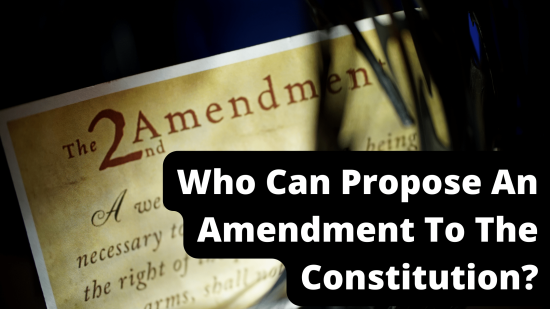Table of Contents
ToggleSources
- https://www.archives.gov/founding-docs/constitution-transcript
The National Archives provides the official transcript of the U.S. Constitution, including Article V, which is directly referenced in the blog post for the amendment process. - https://www.senate.gov/civics/constitution_item/constitution.htm#a5_
The U.S. Senate's official website offers a detailed explanation of Article V and the amendment process, supporting the methods described in the blog post. - https://www.britannica.com/topic/Constitutional-Convention
Encyclopedia Britannica provides authoritative background on the Constitutional Convention, relevant to the historical context and the amendment process discussed in the post. - https://www.law.cornell.edu/constitution/articlev
Cornell Law School's Legal Information Institute offers a legal analysis of Article V, supporting the technical details of the amendment process mentioned in the blog. - https://www.history.com/topics/united-states-constitution/constitution
History.com provides historical context and details about the U.S. Constitution, including the amendment process, which aligns with the blog's discussion on constitutional changes.
Key Points
- The US Constitution includes Article 5, which outlines two methods for proposing amendments.
- Method 1: Congress can propose an amendment with a two-thirds majority in both the House and Senate, followed by ratification from 38 states.
- Method 2: Two-thirds of state legislatures can call a Constitutional Convention to propose amendments, though this method has never been used.
- A Constitutional Convention requires a quorum of states and delegates, with each state delegation casting one collective vote.
- There have been three historical attempts to call a Constitutional Convention, but only one succeeded via the congressional method.
- Only Congress or state legislatures can propose amendments; the executive and judiciary branches have no veto power.
- Citizens cannot directly propose amendments but can petition their representatives to advocate for changes.
- Proposing an amendment is difficult and requires significant effort, including convincing elected officials to support the change.
- Article 5 was specifically designed to facilitate the amendment process while maintaining a high threshold for changes.
Summary
The blog post explains the two methods for proposing a constitutional amendment under Article V of the U.S. Constitution: (1) a two-thirds majority vote in both houses of Congress, which has been used for all 33 amendments so far, or (2) a Constitutional Convention called by two-thirds of state legislatures, a method never successfully used. While citizens can’t directly propose amendments, they can lobby their representatives to initiate the process. The post highlights the challenges of the state-led convention method, noting past attempts that fell short of the required support.
Proposing A Constitutional Amendment
The Articles of Confederation was nearly impossible to change. Therefore, when the US Constitution was drafted, the Constitutional Convention included a more viable method for proposing an amendment.
This was known as Article 5 of the Constitution.
Article V of the Constitution states that an amendment to the Constitution can only happen in one of two ways. The first method is via Congress, while the second is from the state legislatures.
Method 1: Constitutional Amendment Through Congress
The more popular of the two methods of changing the constitution is by acquiring a two-thirds majority in the House of Representatives and the Senate.
Congress can then propose an amendment to the Constitution. The number of votes from either party is irrelevant so long as the total votes of both houses make up a two-thirds majority.
Once the proposed amendment has been passed, it goes to the states for ratification, whereby 38 out of the 50 states must agree.
After the 38th state officially agrees to the amendment’s ratification, the amendment is immediately active, even without congressional officiation by Congress.
This is the usual method of proposing an amendment.
It has been the case for all 33 submissions to amend the Constitution.
Method 2: The State Legislatures Propose an Amendment
A second method of proposing an amendment to the Constitution is for two-thirds of the State legislatures to call for a Constitutional Convention.
At this convention, legislatures propose amendments that, once agreed upon, are sent to the states for the ratification process.
Despite being an officially recognized method for proposing an amendment, establishing a Constitutional Convention through the State Legislatures for this purpose has never been done since the Constitution’s founding.
In fact, many in political science circles wonder exactly how such a convention would be formulated or occur.
Establishing A Constitutional Convention
While establishing a Convention to alter the Constitution itself has never been done, a similar process was implemented to propose the Constitution itself.
During that time, the Convention required a quorum (7 of the 13) of the existing states to arrive before they began.

Once the Convention began, each state would have several delegates forming a delegation. This delegation would be given one collective vote.
The vote would either be in favor or against the proposed amendment based on the majority opinion of the delegates. If the delegates were split, the state would not cast a vote.

Get Smarter on US News, History, and the Constitution
Join the thousands of fellow patriots who rely on our 5-minute newsletter to stay informed on the key events and trends that shaped our nation's past and continue to shape its present.
Overall Difficulty In Creating A Constitutional Convention
There have been three separate attempts to call for a Convention throughout history.
The first was an amendment to provide Senators with a popular election.
The second amendment allowed states to include additional factors outside of population equality when establishing state legislative districts.
Finally, the third attempt proposed an amendment requiring the US budget to be regularly balanced.
While the first attempt eventually went through via the congressional method, the second and third attempts, while close, were unable to reach the two-thirds threshold.
Who Can Propose A Constitutional Amendment?
Under Article 5 of the Constitution, only Congress or State Legislatures can propose an Amendment. No one from the executive or the judiciary branch can veto or deny an amendment from passing, whether a sitting President or a Supreme Court Judge.
While average citizens are similarly unable to push for a proposed amendment to the constitution, they can petition their elected officials.
How to propose an amendment
Anyone may propose a bill to Congress or present a potential amendment to the Constitution. Of course, only a congressional member can propose a bill on the floor.
By contacting and meeting your representative, you may convince your officials of the importance of a bill.
This can result in that bill being proposed on the floor, passed by the houses, and observed as law as part of the Constitution. It isn’t easy and will take a lot of effort on your end.
However, Constitutional Amendments is what Article 5 was meant for.
Who Can Propose An Amendment To The Constitution? Quiz
Frequently Asked Questions
What are the two methods for proposing a constitutional amendment as outlined in Article V of the US Constitution?
How many states must ratify a proposed constitutional amendment for it to become active?
Has a Constitutional Convention ever been successfully called by state legislatures to propose an amendment?
Who has the authority to propose a constitutional amendment under Article 5?
Can average citizens propose a constitutional amendment, and if so, how?
How useful was this post?
Click on a star to rate it!
Average rating / 5. Vote count:
No votes so far! Be the first to rate this post.
We are sorry that this post was not useful for you!
Let us improve this post!
Tell us how we can improve this post?






